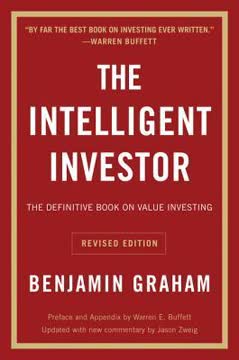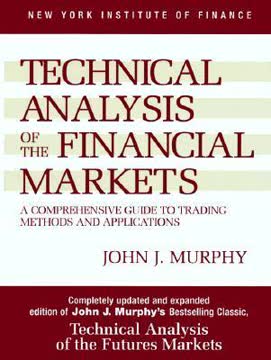Key Takeaways
1. Master market direction to safeguard your investments
The market doesn't care who we as individuals are, what we think, or how we feel.
Follow the market's lead. Understanding market direction is crucial for protecting your investments. Learn to recognize signs of market tops and bottoms by studying historical patterns and monitoring key indicators such as:
- Distribution days: When major market indexes close lower on higher volume
- Follow-through days: Confirming a potential market bottom with a strong up day on higher volume
- Price and volume action of leading stocks
By mastering these concepts, you can better time your entries and exits, potentially avoiding significant losses during market downturns and positioning yourself for gains during uptrends.
2. Implement a 3-to-1 profit-and-loss strategy for consistent gains
You should consider selling a few of your stocks when they are up 20 to 25 percent from your purchase price and cutting every single loss at no more than 7 or 8 percent.
Balance risk and reward. This strategy allows you to be right on only 30% of your stock purchases and still maintain your capital. Here's how it works:
- Sell winners when they're up 20-25%
- Cut losses at 7-8%
- Exception: Hold stocks that gain 20% within 1-3 weeks for at least 8 weeks
This approach helps protect your capital while allowing for potential big winners. It also encourages disciplined decision-making and removes emotional attachment to stocks.
3. Identify and invest in the best stocks using the CAN SLIM criteria
The only law it obeys is the law of supply and demand.
Focus on proven performers. The CAN SLIM system helps identify stocks with the highest potential for significant gains:
- C: Current quarterly earnings up 25% or more
- A: Annual earnings increases
- N: New products, management, or industry conditions
- S: Supply and demand
- L: Leader in its industry
- I: Institutional sponsorship
- M: Market direction
By focusing on these criteria, you increase your chances of investing in companies with strong fundamentals and market momentum. Pay particular attention to earnings growth, as it's often the primary driver of stock price appreciation.
4. Recognize when to sell stocks to maximize profits and minimize losses
Make no mistake, though: managing a more concentrated portfolio of common stocks takes discipline and skill.
Develop a disciplined selling strategy. Knowing when to sell is just as important as knowing when to buy. Key selling signals include:
- Climax runs: Rapid price increases and wider price spreads
- Late-stage bases: Fourth-stage bases are more likely to fail
- Relative strength breakdown: When a stock's RS line fails to make new highs
- Excessive stock splits: Often a sign of a top
Additionally, always adhere to your predetermined loss-cutting rules. By consistently following these guidelines, you can protect your gains and limit your losses, ultimately improving your overall investment performance.
5. Manage your portfolio effectively to optimize results
Managing a portfolio of stocks is like tending a garden.
Cultivate your investments. Effective portfolio management involves:
- Concentration: Focus on a limited number of high-quality stocks
- Diversification in time: Add to positions gradually
- Force-feeding: Shift funds from weaker to stronger performers
- Regular review: Evaluate your holdings weekly, monthly, and quarterly
Avoid common pitfalls such as over-diversification, averaging down on losing positions, and holding onto underperformers. Instead, concentrate on your best ideas and be willing to cut ties with stocks that aren't meeting your expectations.
6. Understand the psychology of investing and avoid common pitfalls
You hope when you should fear, and fear when you should hope.
Master your emotions. Successful investing requires overcoming psychological barriers:
- Avoid confirmation bias: Don't seek information that only supports your existing views
- Resist the urge to average down: Adding to losing positions often leads to larger losses
- Don't fall in love with stocks: Be willing to sell when the fundamentals change
- Ignore the crowd: The majority is often wrong at crucial market turning points
By understanding and controlling these psychological factors, you can make more rational, data-driven decisions and avoid costly mistakes that plague many investors.
7. Continuously educate yourself and adapt to market changes
It'll always be the extra work and effort you put into any endeavor that pays off.
Never stop learning. The market is constantly evolving, and successful investors must adapt:
- Study market history: Analyze past winners and losers to identify patterns
- Keep detailed records: Track your trades and learn from both successes and failures
- Stay informed: Follow financial news, but focus on facts rather than opinions
- Develop your skills: Practice chart reading, fundamental analysis, and risk management
By committing to ongoing education and improvement, you'll be better equipped to navigate changing market conditions and capitalize on new opportunities as they arise.
Last updated:
FAQ
What's "The Successful Investor" about?
- Investment Guidance: "The Successful Investor" by William J. O'Neil provides practical advice on how to invest profitably and avoid significant losses in the stock market.
- Market Analysis: The book emphasizes understanding market trends and using charts to make informed investment decisions.
- CAN SLIM Method: It introduces the CAN SLIM investment strategy, which is based on historical analysis of successful stocks.
- Risk Management: O'Neil stresses the importance of cutting losses quickly and taking profits strategically to maximize returns.
Why should I read "The Successful Investor"?
- Proven Strategies: The book offers time-tested investment strategies that have been successful over decades.
- Educational Value: It provides a comprehensive education on stock market investing, suitable for both beginners and experienced investors.
- Practical Advice: O'Neil shares practical tips on how to manage a portfolio effectively and make informed investment decisions.
- Avoiding Losses: The book focuses on strategies to minimize losses, which is crucial for long-term investment success.
What are the key takeaways of "The Successful Investor"?
- Market Timing: Understanding market trends and timing is crucial for investment success.
- CAN SLIM Strategy: The CAN SLIM method is a core strategy for identifying potential stock winners.
- Risk Management: Cutting losses quickly and taking profits at the right time are essential practices.
- Continuous Learning: Investors should continuously educate themselves and adapt to market changes.
What is the CAN SLIM method in "The Successful Investor"?
- Acronym Meaning: CAN SLIM stands for Current earnings, Annual earnings, New products, Supply and demand, Leader or laggard, Institutional sponsorship, and Market direction.
- Stock Selection: It is a strategy for selecting stocks with strong earnings growth, market leadership, and institutional support.
- Market Timing: The method emphasizes buying stocks at the right time, particularly when they break out of sound chart patterns.
- Risk Management: It includes rules for cutting losses and taking profits to manage investment risk effectively.
How does William J. O'Neil suggest managing investment risk in "The Successful Investor"?
- Cut Losses Quickly: O'Neil advises selling stocks that fall 7-8% below the purchase price to prevent large losses.
- Profit-Taking Strategy: He recommends taking profits when stocks rise 20-25% to lock in gains.
- Portfolio Management: Regularly review and adjust your portfolio, selling underperforming stocks and adding to winners.
- Market Awareness: Stay informed about market trends and adjust your investment strategy accordingly.
What are the best quotes from "The Successful Investor" and what do they mean?
- "The market doesn't care who you are or what you think, hope, or want." This emphasizes the importance of objectivity in investing and not letting emotions drive decisions.
- "You buy stocks on the way up in price, not on the way down." This highlights the strategy of buying stocks that are showing strength and upward momentum.
- "It's your sitting, not your thinking, that makes the big money for you." This suggests that patience and holding onto winning stocks can lead to significant profits.
- "A foolish consistency is the hobgoblin of little minds." This quote, borrowed from Emerson, underscores the need for flexibility and adaptability in investment strategies.
How does "The Successful Investor" suggest using charts for investment decisions?
- Chart Reading: O'Neil emphasizes the importance of learning to read stock charts to identify buying and selling opportunities.
- Pattern Recognition: The book discusses specific chart patterns, such as the cup-with-handle, that indicate potential stock breakouts.
- Volume Analysis: Analyzing trading volume alongside price movements helps determine the strength of a stock's trend.
- Market Health: Charts can indicate the overall health of the market, helping investors decide when to enter or exit positions.
What is the importance of market direction in "The Successful Investor"?
- Market Trends: Understanding whether the market is in an uptrend or downtrend is crucial for making informed investment decisions.
- Distribution Days: O'Neil explains how to identify distribution days, which signal potential market tops.
- Follow-Through Days: Recognizing follow-through days helps confirm the start of a new market uptrend.
- Investment Timing: Aligning investments with the market's direction increases the likelihood of success.
How does "The Successful Investor" address the role of institutional sponsorship?
- Institutional Influence: Institutional investors, such as mutual funds, have a significant impact on stock prices due to their large trades.
- Stock Selection: O'Neil suggests choosing stocks with strong institutional sponsorship, as it indicates confidence in the company's prospects.
- Monitoring Changes: Investors should track changes in institutional ownership to gauge interest in a stock.
- Market Support: Institutional buying can provide support for a stock's price, reducing volatility.
What does "The Successful Investor" say about diversification?
- Concentration vs. Diversification: O'Neil argues for a concentrated portfolio of high-quality stocks rather than excessive diversification.
- Focused Investments: By focusing on fewer stocks, investors can better manage and understand their investments.
- Risk Management: While diversification reduces risk, it can also dilute potential returns if not managed properly.
- Quality Over Quantity: The emphasis is on owning the best stocks rather than spreading investments too thinly.
How does "The Successful Investor" suggest handling emotions in investing?
- Emotional Discipline: O'Neil stresses the importance of controlling emotions and not letting them dictate investment decisions.
- Objective Analysis: Rely on objective data and analysis rather than personal opinions or market hype.
- Avoiding Panic: Stay calm during market volatility and adhere to established investment rules.
- Long-Term Focus: Maintain a long-term perspective and avoid reacting to short-term market fluctuations.
What are the common mistakes to avoid according to "The Successful Investor"?
- Ignoring Sell Rules: Failing to cut losses quickly can lead to significant financial damage.
- Overconfidence: Believing you can predict market movements without data-driven analysis is risky.
- Chasing Trends: Jumping on popular stocks without proper research can result in poor investment choices.
- Neglecting Education: Continuous learning and adapting to market changes are essential for long-term success.
Review Summary
The Successful Investor receives mixed reviews, with an average rating of 3.90/5. Some readers find it informative for understanding stock market graphs and investing strategies, particularly the CAN SLIM approach. However, critics argue it's outdated, focuses too much on past events, and serves as an advertisement for Investor's Business Daily. The book is praised for its concise trading system and timeless principles but criticized for being overly technical and potentially challenging for beginners. Some readers note it's similar to O'Neil's previous work, "How to Make Money in Stocks."
Similar Books










Download PDF
Download EPUB
.epub digital book format is ideal for reading ebooks on phones, tablets, and e-readers.






